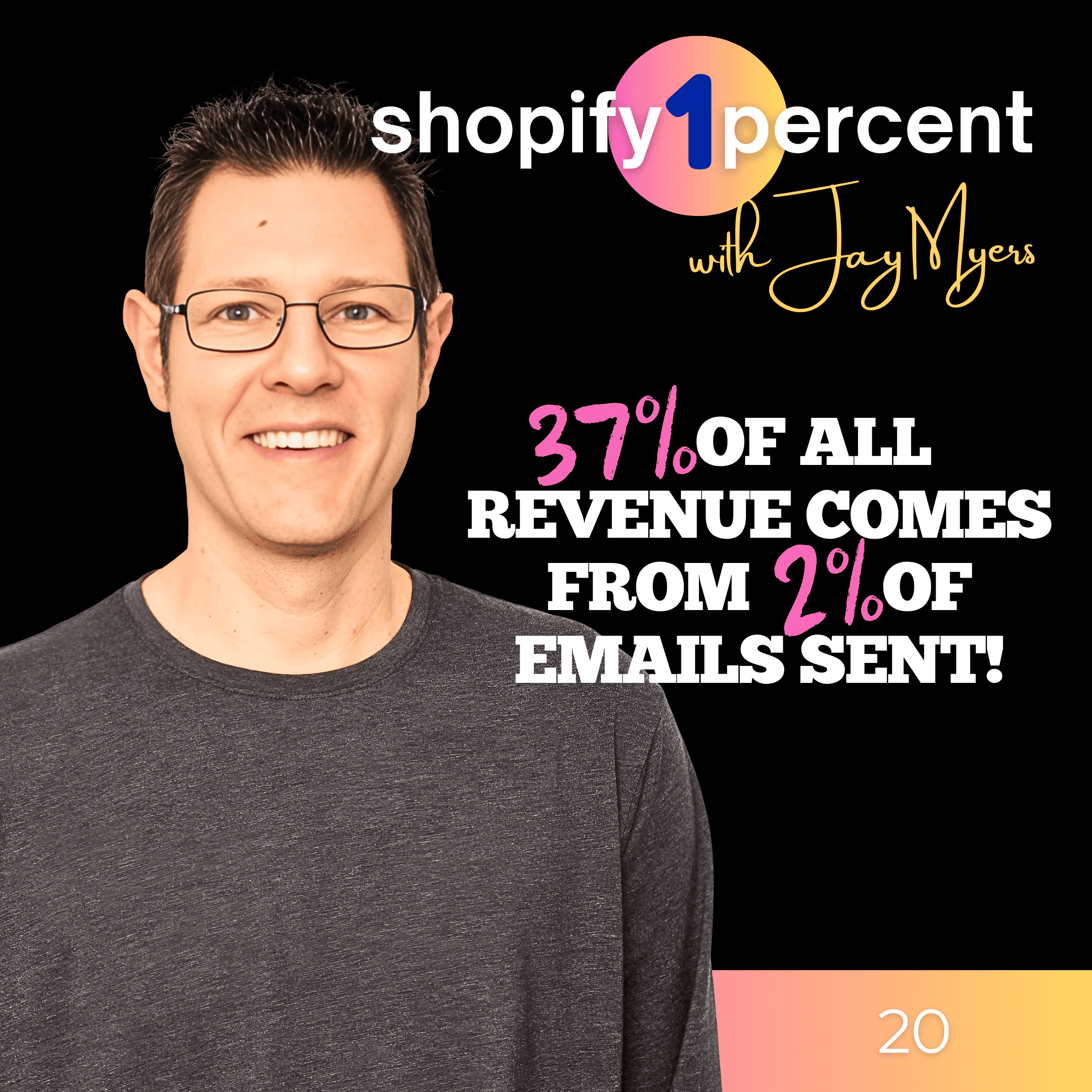"37% of revenue will come from just 2% of your emails", and Why Email is Your Most Valuable Shopify Marketing Channe

If you’ve ever heard someone say email marketing is “dead,” you can officially ignore them. After sitting down with Greg Zakowicz, Senior Ecommerce Expert at Omnisend, I’m more convinced than ever that email and SMS are not just alive – they’re thriving. Greg has been in the email game for nearly two decades. That’s right. He was crafting subject lines when most of us were still trying to figure out how to schedule a tweet.
In this week’s Shopify 1% Podcast, we unpacked how to build a retention marketing strategy that actually drives revenue (and doesn’t just make you feel busy). Whether you’re just sending a random campaign every few months or you’ve got complex flows in place, there’s something here for every Shopify merchant who wants to grow smarter.
Let’s break down what I learned.
Automations Are a Cheat Code – Use Them
Here’s a stat that made me nearly fall off my chair: According to Omnisend’s 2024 benchmark report, automations made up only 2% of total email sends but accounted for 37% of all email-driven sales. That’s wild. Think about it. You’re doing 2% of the work and getting more than a third of the revenue. It’s like finding a treadmill that burns 10x more calories per step.
So what automations do you absolutely need on your Shopify store?
-
Welcome Series – This is your first impression. Nail it. Send a welcome email immediately after someone signs up (Greg suggests within one minute). Suggest top-rated products and reinforce why your brand is the one to trust.
-
Cart Abandonment – Obvious, yes, but still underused. Don’t just fire off one generic email. Customize your messages based on cart value. For example, Greg shared how he splits flows by cart total. Under $50? Maybe highlight free shipping. Over $100? Offer a coupon code to sweeten the deal.
-
Product Abandonment – Often called "browse abandonment," this targets shoppers who viewed a product but didn’t add it to their cart. Use this moment to deliver relevant info about the item and add social proof to tip the scale.
-
Post-Purchase Flows – One of the most underutilized flows in ecommerce. This is where you check in, share product care tips, cross-sell accessories, or simply say thank you. Greg told a great story about a high-end Christmas tree brand that cut customer service complaints by 50% just by sending a post-purchase "how to fluff your tree" video. Genius.
-
Back in Stock Alerts – Highest-converting automation, hands down. Omnisend reports that these emails convert at a ridiculous 5.8%, the highest of any email type. Bonus: they double as list-builders for sold-out items.
Your Shopify Popup Isn’t Annoying – It’s a List-Building Machine 💪
Still worried your popup is too annoying? Let it go. Everyone’s used to them. What matters is how you design and present it. Greg recommends:
-
Keep it simple
-
Make the X easy to find (don’t hide it – people hate that)
-
Don’t ask for too much info (collect only what you’ll use immediately)
He also touched on SMS collection. Younger generations increasingly use their phone number as their primary contact. If you're only asking for email, you're missing out. And yes, Omnisend lets you A/B test your popups, so spin-the-wheel vs. mystery discount? You don’t have to guess which performs better.
Email Isn’t Just for Discounts – It’s a Loyalty Engine
Here’s a mindset shift I loved. When someone buys a product from you, they’re not a customer yet – they’re a lead. You still have to earn their loyalty. That’s where thoughtful post-purchase emails shine. Educate them. Entertain them. Reinforce the value of their purchase.
Greg’s tip: Don't turn your welcome email into a brand origin story. Save that for your About page. Your first email should help your customer find their next favorite product, not make them sit through your autobiography.
Support Is a Secret Marketing Channel
This one hit home for me. At Bold, we always believed that great support was our unfair advantage. Greg backed it up with data: customers who interact with support during their free trial are twice as likely to become paying users. That’s wild. And guess what? Omnisend gives all users – even free plan users – 24/7 live chat support. That’s rare in this space.
So if you’re not thinking about customer support as part of your marketing stack, it’s time to start. A quick, helpful interaction can turn a frustrated shopper into a lifelong fan.
Personalization Without the Tech Headache
You don’t need to be a data scientist to personalize your flows. Omnisend makes it ridiculously easy to build paths based on what your customer clicked on or looked at. Let’s say someone clicks “Dog Food” in your email nav bar. Send them a second message featuring best-selling dog products. That level of personalization is easy to set up – and it works.
Final Thoughts
Email and SMS marketing for your Shopify store doesn’t have to be complicated. Start with the fundamentals, build smart automations, and let customer behavior do the heavy lifting. Tools like Omnisend make it easier than ever to deliver relevant, timely messages without feeling like a spammer.
Greg’s parting advice was spot on: don’t get overwhelmed. Tackle one improvement at a time. The best Shopify stores aren’t built overnight – they’re built by making 1% improvements every day (hey, that sounds familiar).
If you haven’t already, check out the Omnisend 2024 Ecommerce Benchmark Report for even more data-backed strategies. And trust me – set up that back-in-stock flow. You’ll thank me later.
Until next time, keep testing, keep improving, and keep owning your growth.
– Jay










